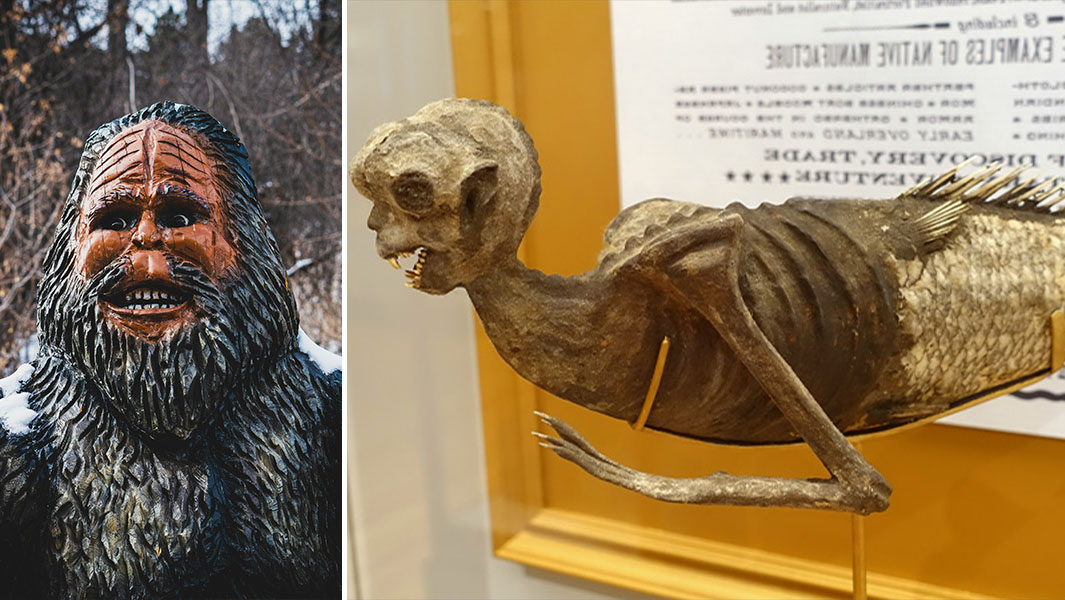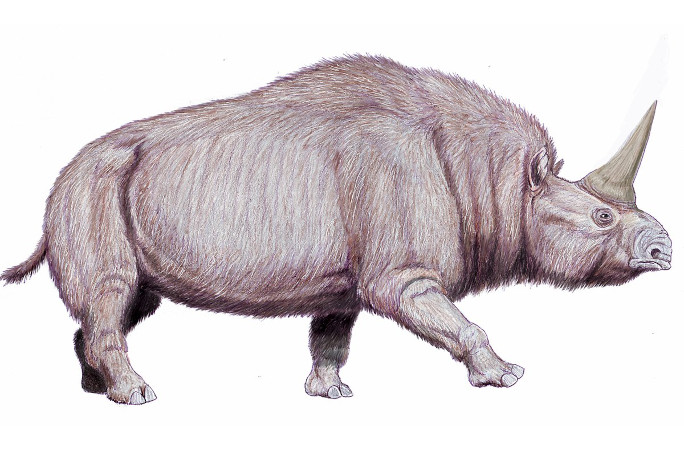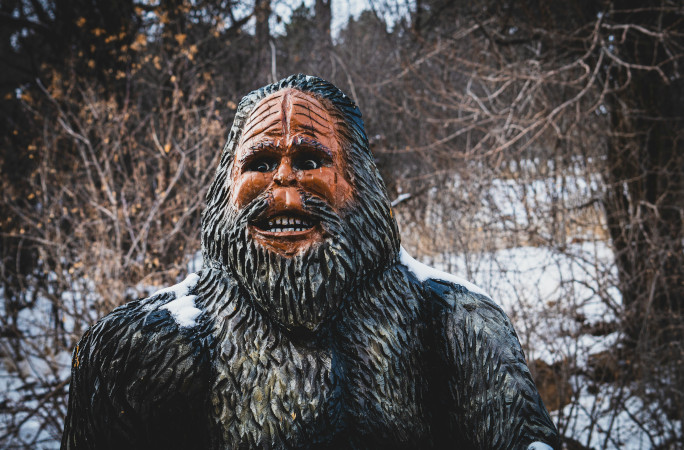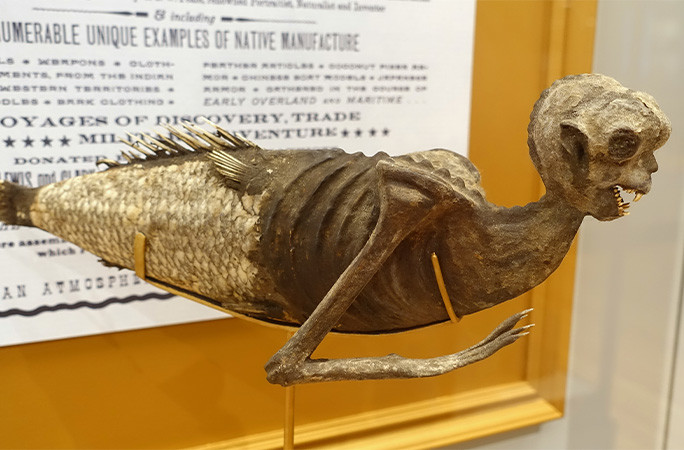‘Real-life’ unicorns, mermaids…and Bigfoot? Some of our best mythical record breakers

While it may be hard to find concrete evidence proving the existence of some of our favourite fantastical creatures like fairies or mermaids, a lot of our contemporary mythological figures come from misunderstandings or scientific processes we couldn’t yet explain.
For example, did you know many people believe the first mermaid sightings were actually from seasick or inebriated sailors, who misinterpreted manatees sitting on rocks for attractive women with fish tails? At that time, the fantasy of a seafaring fish-woman would’ve been popular in cultures around the world, so it’s possible sailors mixed up their fantasies with their realities.
Nevertheless, there are a few record breakers that claimed titles because of their relationship to fantasy – so keep reading to find out more about the largest real-life unicorn, what’s up with all those fairy circles, the tallest bigfoot, and more!
Largest real-life unicorn - the Elasmotherium, or the “Giant Unicorn”
While we might think of unicorns as pretty horses with horns, the actual largest mammal to ever exist with a horn is the Elasmotherium, a type of prehistoric rhinoceros (sorry, narwhal fans).

Picture: Wikimedia CC
These beasts were about the size of a mammoth, with a total height exceeding 2.5 m, a length sometimes exceeding 5 m, and a weight estimated at 5 tonnes – and based upon fossil skeletal evidence, palaeontologists believe that this colossal rhinoceros bore a single massive horn at least 2 m long positioned centrally upon its brow.
Though sadly the largest real-life unicorn doesn’t exist anymore, we know they survived until at least as recently as 50,000 years ago during the Late Pleistocene in the Black Sea region of southern Russia, and extending as far west as Siberia, where they may even have lingered into historic times.
Highest density of fairy circles - Newman fairy circles, Australia
Fairy circles are another fantasy caught in public memory, either referring to naturally occurring rings or circles of mushrooms, or mysterious circular or oval gaps in low-lying vegetation that occur occasionally in arid grasslands.
In any case, scientists aren’t sure exactly what causes these beautiful (yet oddly creepy!) rings of plants, but leading theories as to what might cause them include: plant self-organization, abandoned insect colonies (such as ants or termites), toxic ground from the chemicals of extinct plants, and clearing performed by some form of rodent, none of these have yet been proven.
In any case, the highest density of fairy circles exhibiting this mysterious phenomenon is found in the Pilbara region of Western Australia, near the town of Newman, where a spatial-analysis study recorded as many as 78 fairy circles per hectare (193 per acre). These counts are based on fairy circles that have a minimum diameter of 2 m (6 ft 6 in), which are clearly visible in satellite imagery or aerial orthophotos. Led by Dr. Stephan Getzin, a leading expert on fairy circles, the research was published in the journal PNAS on 29 March 2016.
Tallest bigfoot - the “True Giant” Bigfoot
Ahh, Bigfoot. One of the most popular figures of North American folklore, according to Bigfoot (also known as sasquatch) researchers, there are several visibly different types of this mysterious hairy bipedal primate. Most believe the tallest bigfoot and the largest of the three is the “True Giant,” which, according to eyewitnesses, stands 3–6 m tall.

Picture: John Sailer / Unsplash
Such huge entities have been reported from several different regions – such as South Carolina and Pennsylvania in the USA and British Columbia in Canada – but most seem to prefer the high mountains in the west and the spruce forests of the north.
Most expensive mermaid - the FeeJee Mermaid
While we certainly can’t claim this mermaid is alive, the most expensive mermaid (sold as a real mermaid) is the FeeJee mermaid, a forged creature designed to look like a mummified mermaid exhibited in the 1820s and 1840s in South Africa, Britain, and America.

A papier-mâché mermaid
American sea captain Samuel Barrett Eades bought the mermaid in 1822 for 5,000 Spanish dollars (approximately $126,600/£110,000 today), and exhibited it shortly thereafter. The figure caused widespread controversy, as scientists and the public began to discuss the existence of submarine humanoids.
This mermaid however was definitely made from papier-mâché, sourced by Dutch traders from Japan, where it is suspected to be a common devotional object for the human-fish spirit ningyo. But when Eades saw it on sale in Indonesia, he literally sold his ship to purchase the figurine, which he believed to be real. He toured with the mermaid for a while on his western route home, before demand caused him to bring the figurine straight to Britain for exhibition.
For a while, Eades profitably stoked the fires of mermaid-madness, until his sins caught up to him. Scientists eventually determined the mermaid was a fake, and Eades got sued by his business partner, who owned part of the ship that he sold to obtain the figure. The mermaid became a Ward of the Chancery, and Eades was forced to spend the rest of his life at sea working to pay back his debt.
After spending years as a touring curiosity, the FeeJee mermaid was eventually purchased by Moses Kimball of the Boston Museum in Massachusetts. Kimball took the mermaid to the American showman P. T. Barnum, who made good use of the media and a fake scientist to generate public interest in seeing her, claiming she was caught in Fiji and thus renaming her to the FeeJee mermaid. There she toured for a few more illustrious years, before being destroyed in a fire – arguably the saddest way for a mermaid to go.


